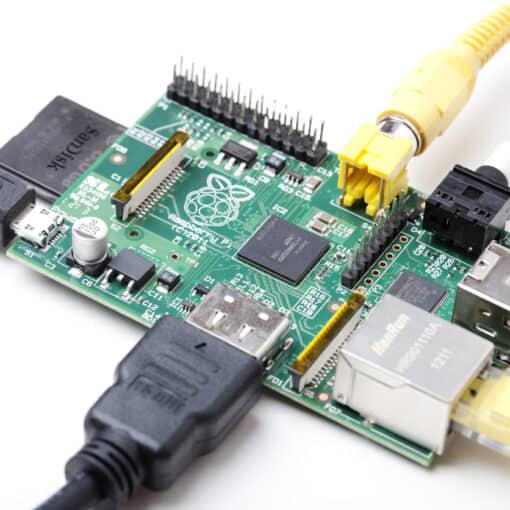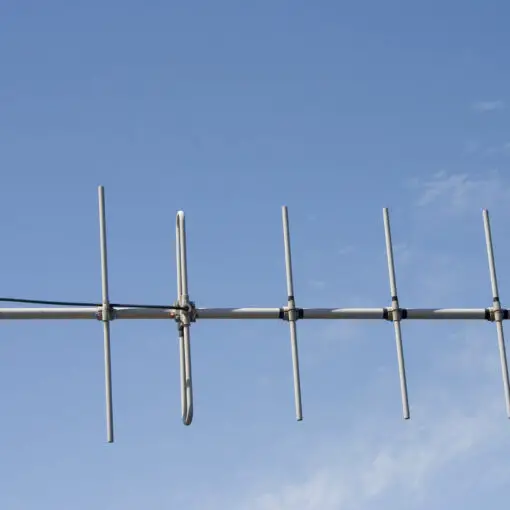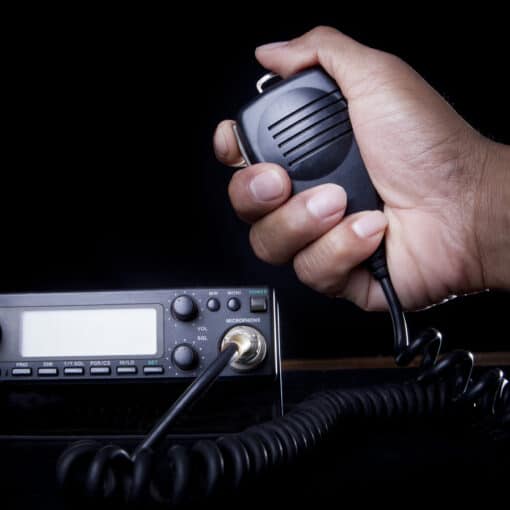Oscilloscopes are essential tools for ham radio operators, playing a significant role in troubleshooting and experimenting with radio frequencies. These devices allow users to visualize and analyze the electronic waveforms of their equipment. Given the different types and specifications available, it’s essential to select the most suitable oscilloscope for your specific needs as a ham radio enthusiast.
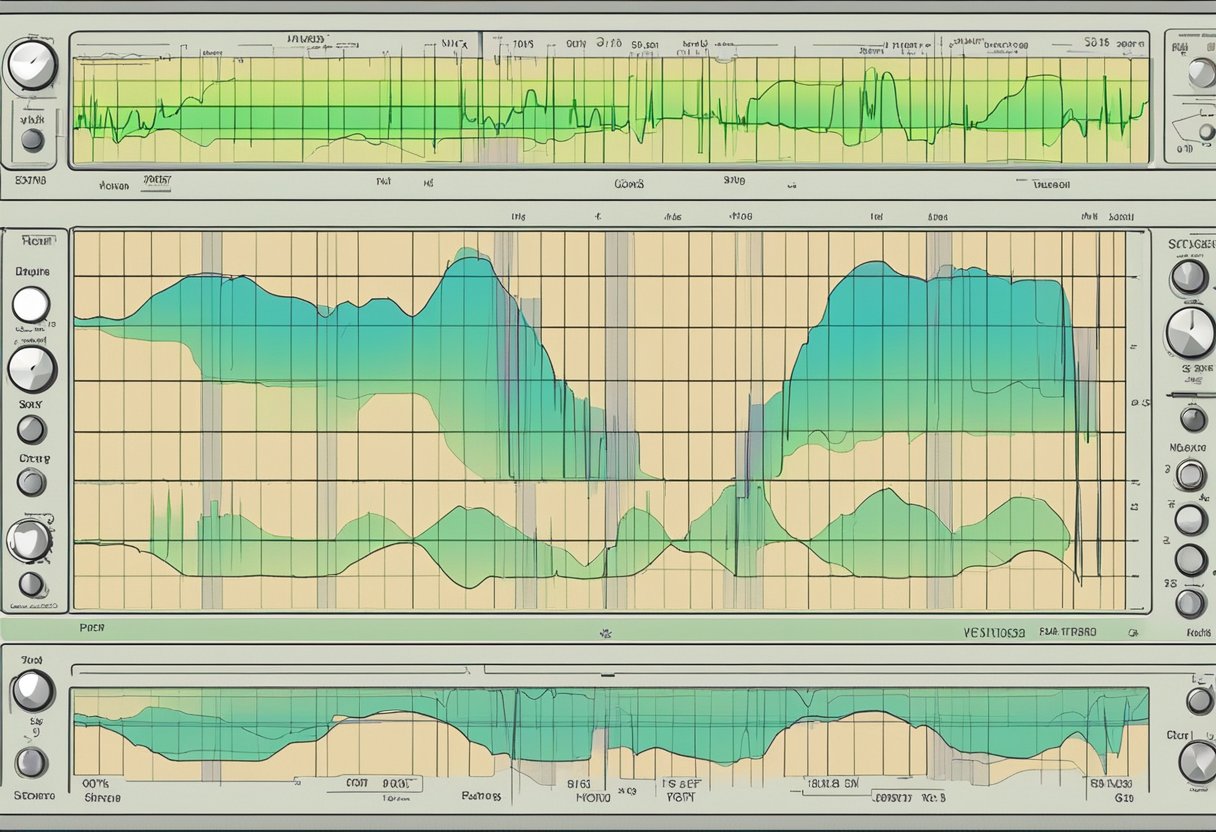

Understanding the key features of an oscilloscope can help users make informed purchasing decisions. Fundamental aspects to consider include bandwidth, sample rate, and the number of channels available. Furthermore, there is a difference between analog and digital oscilloscopes, with each type offering unique benefits. Ham radio operators can utilize either type, depending on their preferences.
Additionally, various prominent oscilloscope models cater specifically to the needs of ham radio operators. These models are designed with features that assist in RF signal monitoring, making them a valuable addition to any ham radio shack.
Key Takeaways
- Oscilloscopes are crucial tools in ham radio operations for visualizing and analyzing electronic waveforms.
- Key features to consider when selecting an oscilloscope include bandwidth, sample rate, and the number of channels.
- Several oscilloscope models are tailored to meet the needs of ham radio operators, providing efficient RF signal monitoring.
Understanding Oscilloscopes


Oscilloscopes are essential tools in the world of electronics, especially for ham radio operators. They allow users to visualize and measure electrical signals, providing valuable insights into equipment performance. This section will briefly explain the differences between analog oscilloscopes, digital oscilloscopes, hybrid scopes, and their frequency and bandwidth capabilities.
Analog Oscilloscope
An analog oscilloscope is a classic electronic test instrument that uses a cathode ray tube (CRT) to display waveforms of electrical signals. These oscilloscopes provide users with a real-time view of the input signal and are especially well-suited for observing rapidly changing signals or transients. Some disadvantages of analog oscilloscopes include their limited measurement accuracy and the need for manual adjustments of controls such as timebase and triggering.
Digital Oscilloscope
A digital oscilloscope, on the other hand, samples the input signal and stores it as discrete points in memory. The digital display then reconstructs the waveform from these stored samples, providing a more accurate and detailed representation of the signal. Digital oscilloscopes offer several advantages over their analog counterparts, such as signal processing capabilities, measurement automation, and waveform storage. However, digital oscilloscopes may struggle with capturing high-frequency signals and transients as effectively as analog oscilloscopes due to limitations in their sampling rate.
Hybrid Scopes
Hybrid scopes bridge the gap between analog and digital oscilloscopes by combining the real-time display capabilities of analog oscilloscopes with the measurement advantages of digital oscilloscopes. Hybrid scopes are less common but may be suitable for users who require both the real-time observation and increased measurement accuracy provided by each respective scope type.
Frequency and Bandwidth
The frequency of an oscilloscope refers to the range of signal frequencies it can accurately measure. This is determined by the oscilloscope’s bandwidth, which is the highest frequency it can effectively capture without significant distortion. The bandwidth required for a ham radio operator’s oscilloscope depends on the specific application, but generally, a higher bandwidth oscilloscope is capable of measuring higher frequency signals and providing more accurate results.
In summary, understanding the differences between analog, digital, and hybrid oscilloscopes, as well as their frequency and bandwidth capabilities, is crucial for ham radio operators. This knowledge allows them to choose the appropriate oscilloscope for their specific needs and make the most of this valuable diagnostic tool.
Key Features of Oscilloscopes
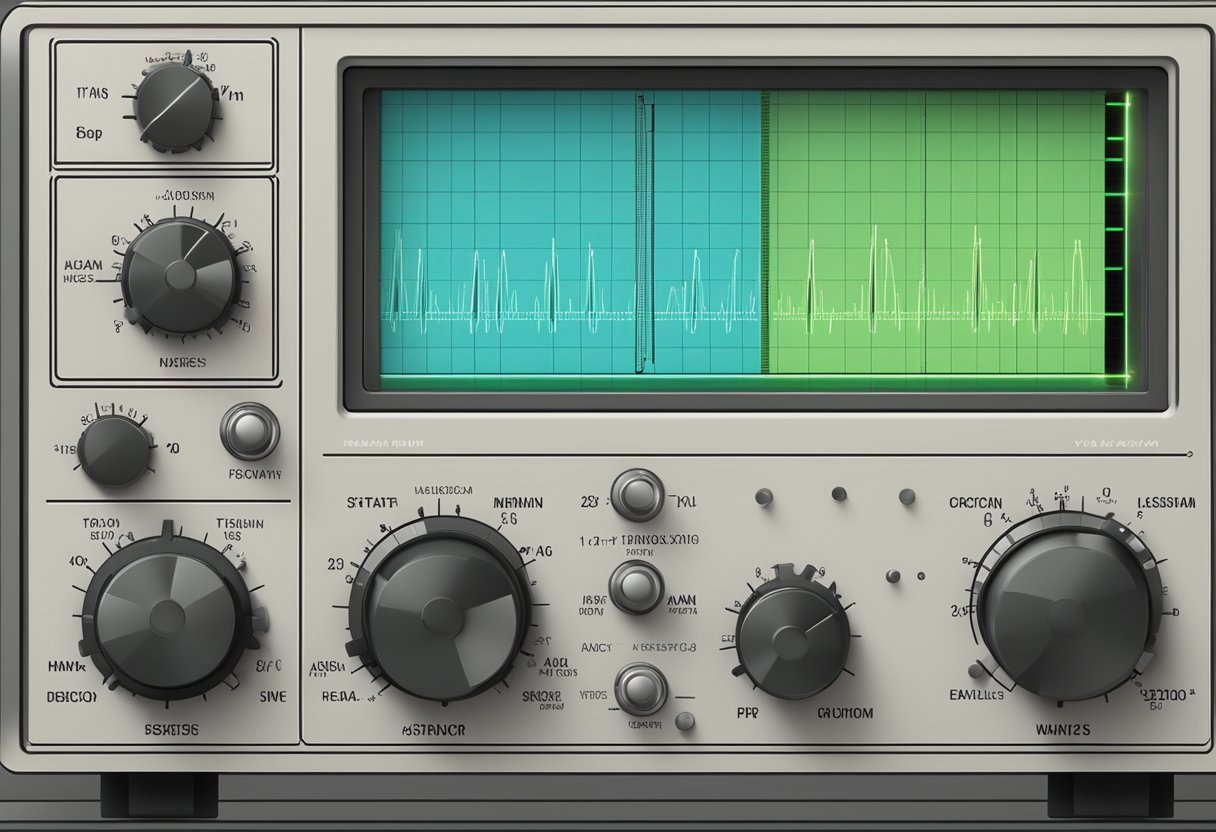

Probes
Oscilloscope probes are essential tools for measuring and displaying electrical signals. They connect the oscilloscope to the circuit under test and transfer the electrical waveform data to the oscilloscope’s display. High-quality probes are essential for accurate measurements, with passive and active probes being the two main types available. Passive probes have a simpler design, lower cost, and are suitable for general-purpose measurements. Active probes usually have higher bandwidth and lower loading effects on the circuit but require a power source and tend to be more expensive.
Controls
The controls on an oscilloscope allow users to manipulate the display and measurement settings. Common controls include time and voltage divisions, triggering options, and adjustments for each channel. They enable users to capture, zoom, and manipulate waveforms to gain insights into the behavior of electrical circuits. Modern oscilloscopes offer intuitive interfaces, such as touchscreen and button-based controls, for ease of use and high-quality displays for clear visualization of waveforms.
Channels
The number of channels on an oscilloscope determines how many signals can be measured and displayed simultaneously. Most oscilloscopes offer 2 to 4 channels, though more advanced models support even more channels. The choice of channels depends on the complexity of the circuits being tested and the specific needs of the user. For ham radio applications, oscilloscopes with at least two channels are typically recommended.
Memory Depth
Memory depth refers to the oscilloscope’s ability to capture and store waveform data. A larger memory depth allows the oscilloscope to record longer waveforms with higher resolution. This is especially important when dealing with complex signals and digital communication systems, which require detailed analysis of the waveforms. The memory depth of oscilloscopes varies widely, with some high-performance models offering 14 Mpts or more.
Math Functions
Oscilloscopes also provide various math functions to enhance the analysis of captured waveforms. These functions may include addition, subtraction, multiplication, integration, and differentiation of signals, as well as fast Fourier transforms (FFT) for frequency domain analysis. Math functions enable users to compare signals and derive additional information about their behavior, making them valuable tools for troubleshooting and diagnostics in a ham radio setup.
Ham Radio and Oscilloscopes
Applications in Ham Radio
Oscilloscopes are essential tools for ham radio operators. These devices allow radio amateurs to visualize and analyze the signals within their equipment, ultimately improving signal quality and understanding of radio communication. Some common applications of oscilloscopes in ham radio include monitoring signal waveform, checking transmitter output, and examining receiver output, providing valuable insights for amateur radio operators.
Communication and Testing
Ham radio enthusiasts use oscilloscopes for a variety of communication and testing purposes. For instance, an operator may use an oscilloscope to compare and analyze multiple signals at once, enabling more effective communication between the ham shack and other operators. Additionally, oscilloscopes can be employed in station monitor testing, which helps evaluate the performance of a transceiver, ensuring optimal operation. A high-quality oscilloscope, such as the Rigol DS1054Z, features a high sample rate of 1 GSa/s, providing fine temporal resolution and signal details.
Troubleshooting
One of the key benefits of using an oscilloscope in ham radio operations is its ability to assist in troubleshooting. For both analog and digital types of oscilloscopes, these devices can help identify issues with signal quality, which could be the result of faulty components or signal interference. Moreover, oscilloscopes can visualize voltage measured on a beam dashing across the screen, such as in an analog oscilloscope. By providing visual insights into signal integrity, radio amateurs are better equipped to pinpoint and address problems, leading to more reliable communication between stations.
Prominent Oscilloscope Models for Ham Radio
Rigol DS1054Z
The Rigol DS1054Z is a popular choice among ham radio operators due to its powerful features and affordability. It has a 100 MHz bandwidth, 16 analog channels, and 4 digital channels. Its high sample rate of 1 GSa/s provides fine temporal resolution and signal details. With four channels to compare multiple signals simultaneously, it’s a versatile choice for a variety of applications.
Siglent SDS1202X-E
Another top contender is the Siglent SDS1202X-E, which offers a 100 MHz bandwidth and 2 channels. This model features a user-friendly interface and advanced triggering capabilities, making it easy to use even for beginners. Its 12 Mpts of memory depth provides ample storage for capturing waveforms and detailed analysis. The Siglent SDS1202X-E is known for its precise measurements and reliability.
HP
Hewlett-Packard (HP) is a well-known brand in the world of electronics, and its oscilloscope models are no exception. HP oscilloscopes offer a variety of features, including wide bandwidths, deep memory, and excellent build quality. Known for their durability and accuracy, HP oscilloscopes are suitable for use in both the amateur radio world and professional settings.
Agilent
Agilent Technologies is another recognized name in oscilloscopes, with models that range from basic to high-performance. With features like high sample rates, mixed signal capabilities, and intuitive interfaces, Agilent oscilloscopes provide a comprehensive solution for radio amateurs. In addition to their advanced capabilities, Agilent oscilloscopes are designed with ease of use in mind, ensuring that both beginners and experienced users can benefit from their features.
Hameg
Hameg Instruments offers a variety of oscilloscopes that are designed with the needs of radio amateurs in mind. Known for their quality and dependability, Hameg oscilloscopes provide users with the tools they need to analyze and troubleshoot their equipment. Hameg oscilloscopes are an attractive choice for any ham radio operator looking for a reliable and user-friendly device.
Additional Considerations
Software and Sound Card
When selecting an oscilloscope for ham radio, consider the software and sound card compatibility with your device. A reliable software should have an easy-to-understand interface along with the ability to handle different sound cards. Some oscilloscopes come with built-in sound cards which can simplify the setup process. Be mindful of software updates and support, as staying up to date with new features and bug fixes will ensure a smooth operation of your oscilloscope.
Presentation and Basics
An oscilloscope’s presentation is crucial, with factors such as screen size, resolution, and ease of navigation being significant considerations. A clear and straightforward presentation will allow you to analyze the signals more efficiently. Regarding basics, the oscilloscope should have fundamental features like zooming, triggering, and channel customization. As highlighted by the Rigol DS1054Z being the best for beginners, it sports a large 7-inch TFT display that allows for clear visualization of waveforms, making it easier to work with.
Opinion and Blogging
It’s essential to research opinions and blogs from experienced ham radio enthusiasts who have reviewed oscilloscopes. They can provide you with valuable insight into which features or specific models are best suited for ham radio use. Ensure that the information is relevant, and avoid taking a single reviewer’s word as gospel, as each operator might have different preferences and experiences.
Sample Rate
The sampling rate is a critical factor in choosing an oscilloscope for ham radio, as it defines the device’s ability to measure radio signals accurately. Sampling rates are generally measured in samples per second (S/s) or mega samples per second (MS/s). Higher sampling rates offer finer resolution, which can be vital in visualizing complex or short-duration waveforms accurately. The SIGLENT TECHNOLOGIES SDS 1202X-E is an example of a well-reputed oscilloscope for ham radio that offers a decent sampling rate to suit most operators’ needs.
Taking these additional considerations into account when choosing an oscilloscope for ham radio can greatly enhance your overall experience and ensure a suitable investment.
Using Oscilloscopes for RF Signal Monitoring
Real-Time Waveform
Oscilloscopes are essential tools for ham radio operators who want to visualize the RF signal in real-time. By connecting the oscilloscope to their equipment, operators can observe the RF envelope and gain insights into the transmitter’s behavior. This video demonstrates a simple way to use an oscilloscope as an RF signal monitor.
The real-time waveform display offers a clear representation of the signal’s amplitude and frequency, which allows operators to identify irregularities, such as distortion or interference. Additionally, this feature is helpful in adjusting transmission settings for optimal performance.
Waveform Capture Rate
The waveform capture rate refers to how quickly an oscilloscope can update the display with new information. A higher capture rate enables the user to observe rapidly changing signals, enhancing their ability to identify and analyze transient events. For ham radio operators, an oscilloscope with a high capture rate is particularly important when monitoring fast-changing RF signals.
A good oscilloscope for ham radio, like the Siglent Technologies SDS1202X-E, is recommended due to its fast waveform capture rate.
Voltmeter and Frequency Counter
Aside from real-time waveform visualization and high waveform capture rates, oscilloscopes are also equipped with voltmeter and frequency counter functions. These features provide valuable information to ham radio operators, as they allow the measurement of voltage levels and frequency of the RF signals.
A voltmeter can measure the amplitude of the RF signal, ensuring it is within acceptable limits and adjusting as necessary to prevent overloading or underutilization of the equipment. The frequency counter function helps operators ensure their transmission frequency is on the desired band and is stable throughout their communication.
In conclusion, using an oscilloscope for RF signal monitoring is an invaluable resource for ham radio enthusiasts. By leveraging the benefits provided by real-time waveform visualization, waveform capture rate, and integrated voltmeter and frequency counter features, operators can better understand their equipment’s functionality and optimize their transmissions.
Frequently Asked Questions
How do I choose the right oscilloscope for my ham radio needs?
When choosing an oscilloscope for ham radio, consider factors such as bandwidth, sample rate, channel count, and usability. Prioritize devices with a bandwidth of at least 50MHz and suitable sample rates for accurate measurements. Additionally, look for features that cater to your specific needs, such as digital storage capabilities or portability.
Can I use an oscilloscope for antenna tuning in ham radio?
Yes, an oscilloscope can be used to aid in antenna tuning by providing visual representation of the voltage, current, and phase across the antenna system. By monitoring these parameters, you can make adjustments to your antenna to achieve optimal resonance and impedance matching.
What is the ideal bandwidth for an oscilloscope used in radio repair?
The ideal bandwidth for an oscilloscope used in radio repair largely depends on the frequency range of the radio equipment being serviced. Generally, a bandwidth of at least 50MHz is recommended for most ham radio applications, but higher values may be necessary for higher frequency bands or specific tasks.
How can an oscilloscope help in testing RF signals in ham radio?
An oscilloscope allows users to visualize and analyze RF signals by displaying the waveform of the voltage or current in a circuit over time. This enables ham radio operators to troubleshoot signal issues, identify noise sources, and diagnose problems with modulation or distortion. Moreover, oscilloscopes with built-in spectrum analyzers can be particularly useful for evaluating signal integrity in frequency domain.
What features should I look for in a digital storage oscilloscope for ham radio?
When selecting a digital storage oscilloscope for ham radio, consider features such as memory depth, sampling rate, measurement tools, and user interface. Sufficient memory depth allows for longer waveform capture durations, while higher sampling rates ensure accurate representation of high-frequency components. Additional measurement tools, such as FFT analysis, can provide valuable insights into your radio signals. Lastly, consider the ease of use and functionality of the device’s interface.
How does an oscilloscope compare to a spectrum analyzer for analyzing ham radio signals?
While both oscilloscopes and spectrum analyzers are valuable tools for ham radio operators, they serve different purposes. Oscilloscopes focus on analyzing signals in the time domain, providing detailed visualization of waveform shape, amplitude, and timing. On the other hand, spectrum analyzers display information in the frequency domain, revealing signal components at different frequency ranges. Depending on the nature of the analysis, either tool might be more suitable, but having both at your disposal can provide comprehensive insights into your ham radio signals.


